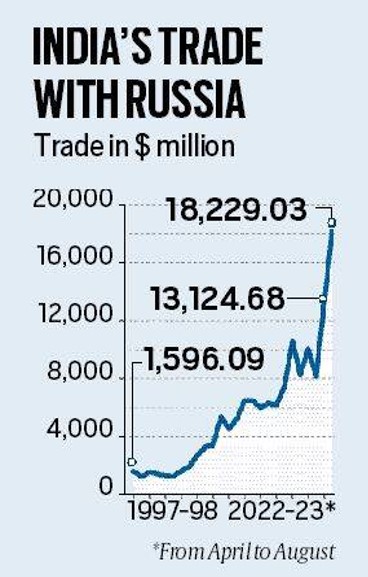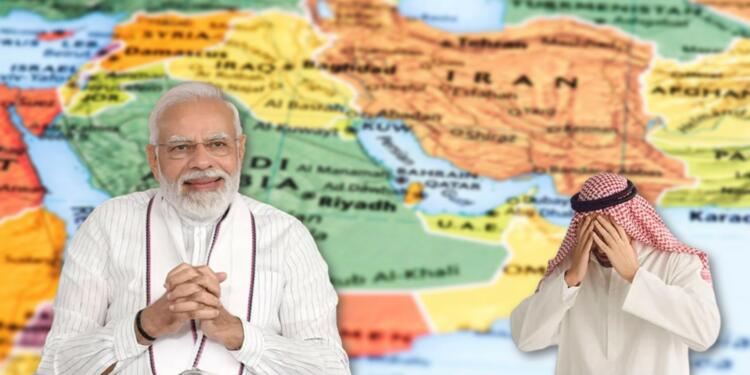Contrary to what is being preached, that the concept of Indian state was derived in the 20th century after the British had taken control, the reality is totally different. We are one of the oldest civilisations on this planet. Mainland India was prosperous, hence often referred to as Sone ki chidiya or the Golden Sparrow.
But why were we called the golden sparrow? There are two reasons for that. First, mainland India happened to be the trade hub for the world with waters on its three sides. And second, there existed a system of Balance of Payment. We traded, but as per our own interests, needs and partners as well. Now, India is once again doing the same under Prime Minister Narendra Modi.
With PM Modi at the helm of affairs, India has changed how it looks, functions and tackles the world. The economists previously made a mistake. In the growth ladder they missed the manufacturing step and directly jumped onto the service sector, missing on the fact that no economy can survive for long without a robust manufacturing sector.
Well, PM Modi has corrected the blunder and Make-in-India campaign has helped India become self-dependent. The scheme along with PM Modi’s leadership has raised India’s stature at the global level. Today we are once again tracing back our traditional trading method; as per our own interests.
How have the dynamics of geopolitics changed?
Since the day Russian President Vladimir Putin has launched his “special military operation” in Ukraine, the dynamics of the world has changed drastically and so has the geopolitical situation for India.
The West, which holds strategic partnership with India, has persuaded India to toe its line and be a part of the sanctions’ regime. However, India, focussing on its own interests, enhanced its trade ties with Russia. India not only brought discounted Russian oil, but coal and fertilisers’ trade also witnessed a boom.

Russia becomes India’s seventh biggest trading partner
Fuelled by a surge in bilateral trade, Russia has now become India’s seventh biggest trading partner. Last year, around the same time, Russia held the 25th position.
As per reports, in the last five months, between April and August, the bilateral trade has shot to an all-time high of $18,229 million. The annual bilateral trade has never touched that height in the last 3-4 years.
| Year | Bilateral Trade |
| 2021-22 | $13,124.68 million |
| 2020-21 | $8,141.26 million |
| 2019-20 | $10,110.68 million |
| 2018-19 | $8,229.91 million |
| 2017-18 | $10686.85 million |
However, in the last five months, the six countries who have clocked trade greater than Russia are the traditional trading partners of India, which include the US, China, UAE, Saudi Arabia, Iraq and Indonesia.
| Countries | Bilateral Trade |
| US | $57,632.37 million |
| China | $50,792.83 million |
| UAE | $36,820.33 million |
| Saudi Arabia | $23,995 million |
| Iraq | $18,822.27 million |
| Indonesia | $18,816.58 million |
India has diversified its trade with Russia, who has emerged as the most reliant partner in other sectors as well other than defence. India has always been a traditional buyer of Moscow’s defence products.
In the recent past, India enhanced its import in the oil and fuel items, which has accounted for 84% of India’s total imports from Russia. This has contributed up to $14,476.52 million in trade as compared to last years’ $1,593.58 million. After oil, the second in the list is occupied with fertilisers which surged by 666.24% from $161.43 million to $1,236.96 million.
How India shifted its imports from Gulf to Russia
The data is going to shock you. Before March 2022, India met almost 85 per cent of its oil needs through imports. The ones contributing the highest to imports to India were the countries from Middle East. More than 50 per cent of India’s oil imports came from the Gulf, with 24 per cent from Iraq, 18 per cent from Saudi Arabia and11 per cent from UAE. These three formed the top three oil importers to India.
With the end of winters and the beginning of the Ukraine-Russia crisis, there has been a complete overhauling in India’s oil imports chart. In the month of June itself, Russia had dethroned Saudi Arabia as India’s second biggest oil partner. India was benefiting a lot as Russian crude was way cheaper than Saudi’s.
End of Gulf’s dominance
It was a well propagated myth that India cannot do without oil from the Middle East. India has successfully changed the narrative. India, today, can easily meet its energy needs without the Gulf. This must be giving them sleepless nights, seeing that all that could keep the cash flowing into the Gulf is ‘OIL’. Russia has now taken up their place and the Gulf countries are rattled by the same.
India was dependent on the Gulf for two things, Crude oil and Gold. India-Russia bonhomie has already rattled the Arabs as far as oil trade is concerned. India has now begun to diversify its import sources in the matter of gold as well. In the gold sector, UAE accounted for a huge share in India’s gold imports. However, India, being the second largest gold consumer in the world, has begun diversifying its gold import and the nations in India’s fold are South Africa and Switzerland, once again curtailing Gulf’s influence.
Gulf’s dependence on India
Now, let me break another myth, it’s not India which is dependent on the Gulf, rather it’s the Gulf itself which cannot survive without India. As oil does not satisfy hunger until traded. Due to geography, all that the West Asia can do is export oil and it cannot survive without food imports.
98% of the area is arid and is subject to drought. It is India that exports almost everything available on the meal plate of the Gulf.
In the FY 2020-21, India exported nearly 24,00,000 metric tonnes of rice to the region. Talking about wheat, in the same financial year, the West Asian countries availed 2,82,678 metric tonnes of wheat from us. India also supplied 50,325 metric tonnes of maize to the region.
These countries not only avail foodgrains like Rice, Maize and wheat from India, but they also need India for fruits, dairy products, processed vegetables, cereals, onions among other items. In fact, these countries ask for India’s assistance even for a recreational stuff like Alcoholic beverage.
As the Gulf nation remain dependent on India for food, the region cannot survive without India. They must be having sleepless nights as India’s dependence on the Gulf is officially in the last phase.
Support TFI:
Support us to strengthen the ‘Right’ ideology of cultural nationalism by purchasing the best quality garments from TFI-STORE.COM































